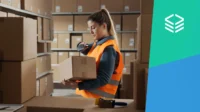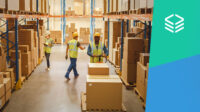
“Let me de-influence you…some products are worth the hype, and some products are just not worth your money…”
That’s what TikTok user @valeriafride had to say about a slew of cosmetic products, as part of the new trend of “de-influencing.” Flipping the script on typical influencer content designed to drive sales, creators who partake in de-influencing critique products and share with viewers what not to buy, often suggesting alternatives to popular products.
While many popular de-influencing videos focus on product attributes ranging from price to quality, prompt, efficient shipping and delivery can make or break a creator’s decision to recommend or return a product.
As the trend continues to gain momentum – the #deinfluencing hashtag has more than 200 million views on TikTok – brands are at risk of being denounced if customers aren’t entirely satisfied with their shopping experience.
Consumers buy what they believe in
It’s all coming at a time when consumers are tightening their spending, reconsidering their definition of loyalty and questioning the sustainability of the brands they buy.
This is particularly true for many influencers’ Gen Z target demographic, 40% of whom have made a purchase based on recommendations from influencers.
They’re also the consumers who seem to care most about the planet and prize brand authenticity—two things often missing from an influencer community paid to advertise products that support an aspirational, not necessarily sustainable, lifestyle.
Fulfillment fuels loyalty and recommendation
No brand can fully control if someone takes to social media and blasts its product. They can, however, lower the risk—and boost customer loyalty to boot—by living up to expectations for the product itself and its arrival on customers’ doorsteps.
The latter requires looking at fulfillment holistically, from understanding the channels on which customers most often buy to ensuring you ship an order from the closest (and most cost-effective) location, package it well (but not to cover up a poor product!) and deliver it when promised.
This requires a flexible, connected network of warehouses and fulfillment locations, omnichannel integration with major commerce channels, and the visibility into order and fulfillment data that allows you better know and understand your customers.
As we’ve learned from the recent experiences of some e-commerce startups, it pays to do what you say you’re going to do when you say you’ll do it (and apologize if you don’t). Delivering a product as advertised by the expected arrival date is a simple way to grow customer loyalty and avoid attracting the wrong kind of online attention.
Find out how Flowspace can help you deliver against customer expectations, so you don’t get de-influenced. Get in touch today.






